|
|
| |
|
|
| |
A further week's holiday which had some bizarre settings but was more staid than the trip which I had initially planned and, indeed, tentatively held: Israel with a two day stopover in Kiev... Just before, I might add, the troubles in the Ukraine. |
Having settled upon Austria and, for the first time, Slovakia, I flew with British Airways to Salzburg from Gatwick and had three lovely days in the famous spa town of Bad Ischl. Bad Ischl, delightful and typical spa town like many others in the general region, is not just about "taking the waters". ( When I went there last, aged seventeen, I found all this spa business quaint and faintly amusing. Thirty-two years, I actively participate even if I haven't quite reached the stage for the need for pampering). No, Bad Ischl's other, maybe main claim to fame, is that it is where the Austrian Kaiser, Franz Josef, who signed the treaty which may have led to the Great War, took his holidays there and so it is referred to as the Kaiserstadt. There is lots within the town to keep his and his wife's memory going: Kaiser shops, Kaiser restaurants, Kaiserschnitzels therein and naturally the grand Kaiser Villa.
I booked into the excellent Stadt Salzburg hotel which was a warm and welcoming place. The room was a decent size, breakfasts – where I treated myself to a surreptitious, if included, glass of champagne at breakfast: taking the waters, after all! – were good and was conveniently placed. In one of my occasional moments of being unable to read my simple map to find the hotel, I stopped by a restaurant where a waitress was doing her accounts outside to ask her the way. She gladly pointed me in the right direction and I ate very well there on all three evenings with a bust of the Kaiser to my side. I'm sure that he would have approved of the Kaiserschnitzel as much as I did. I was pleasantly surprised by the good value of eating out in Austria.
Okay, my interest in Where Eagles Dare is becoming more bizarre and might appear to be verging upon paranoia now. It's not quite reached that stage but I do feel a certain satisfaction in reaching – I think and hope! – certain outposts used in the film. Werfen castle, Ebensee and Lofer are easy, bends in the road such as the one near Hallein over Easter are slightly trickier. The latest bend in the road which doubles up as a bridge on the L1296 on the Offensee road was wider than the Hallein road but not appreciably less busy. I did chuckle at myself wandering apparently aimlessly along this road whilst others enjoyed hikes in the woods nearby – one soul offered me a lift back – but I'm no longer inclined to dwell upon these apparent mental aberrations. More of a problem is that, whilst mountains don't change, roads do and, almost forty-seven years after the film was shot, one can never be entirely sure that the correct place has been found. I returned – happy – after seeing two bridges and, having discounted one, watched the film having satisfied myself that the spot was the first bridge just over 3kms from where I had started. I could have sworn when I saw a damned waterfall in the film – it is the scene at the end of the film where a bridge is blown up to allow our heroes to fly home to safety – and had I seen anything like that whilst on the bridge? Well, having taken lots of photos as you, I hope, do, an additional structure, presumably put up within the last forty-seven years, did keep some water at bay so I am more hopeful now. Anyway, it was a nice walk and good exercise.
Having missed the two-hourly train from Steinkogel to Ebensee – which takes four minutes – I walked there and up to the place in the film which is not subject to any locational dispute: the Feuerkogel cable car slightly out of Ebensee. Thirty-two years ago, I had been in one of the original cable cars with my parents and two engineers on the roof. Soon afterwards, those cars – at the time, possibly the oldest in use in Austria – had been replaced but the originals can be still be found. One should still be at the top of the Feuerkogel and the other is near the valley station in someone's back garden. I saw the latter. A beer while watching the regular arrivals and departures of the cable cars was perfect after walking almost 25 kilometres.
Bad Ischl's main spa, the Eurotherme, is one of the best which I have used and included an array of swimming pools and saunas. The Stadt Salzburg offered discounted tickets to guests and it was wonderful after a day's walking. One experience which I hadn't had – I won't say enjoyed even afterwards – was the half-hourly Aufguss performed in the inevitably-named Kaisersauna. Amidst much arm-waving and fanfare, someone basically waves a towel about to fan the heat and, God knows why, but with the door occasionally open, I imagined that it would make it cooler... Anything but and, after being told off for not having my feet on the towel, I was quite relieved to leave. I'm certainly not knocking it, mind you.
The second main day was spent in St Wolfgang, renowned for its Weisses Rossl or White Horse Inn after the operetta, and Halstatt, both of which are close to Bad Ischl. I have stayed in St Wolfgang on around three or four occasions and love it and it was a delight returning there even if parts have been modernised. Its setting on the Wolfgangersee is idyllic and is one of many highlights of the Salzkammergut region and, indeed, Austria.
|
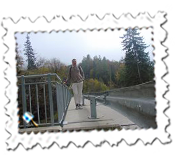
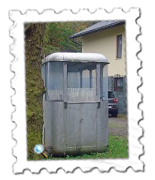

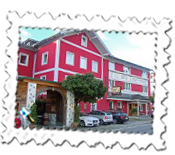
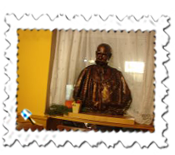

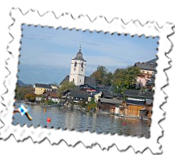

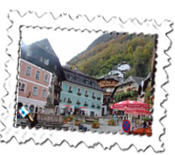
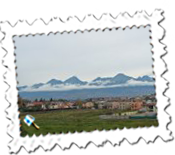
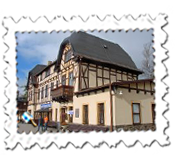
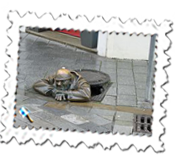

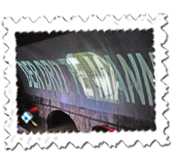

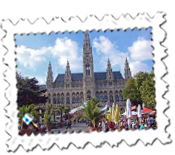
|
Halstatt is the picture-postcard town on the Halstattersee but maybe going by train wasn't, as I discovered, the best way with little time to spend. The train station is opposite the town and requires a further trip, albeit short, across the lake to reach the town. For sure, it gave wonderful views and was fun but did leave me just an hour there. One of its peculiarities is a charnel house within the church which houses hundreds of skulls, named and with dates of birth and death on each skull. Maudlin possibly but equally fascinating!
I left Bad Ischl for Bratislava on the Tuesday and was pleased to book one of the Austrian Railways ( OBB) long distance, sparschiene tickets from their website which was a complete bargain for 19 euros and excellent value if, like me, you can stick to the journeys booked. There was a change in Attnang-Puchheim and the initial journey took me to Vienna in around three and a half hours before taking the Slovak Lines bus from Wien Hauptbahnhof to Slovakia's capital, Bratislava in around an hour and a half. Again, this journey is cheap costing around 7 euros and can be booked online. I'd pooh-poohed initially their suggestion of reserving on a certain bus but all the coaches I went on – and there are twenty-three each day, an advert said – were very busy so was glad to have done so.
The instructions on my map seemed simple and the walk to the Apollo Hotel should only have taken a handful of minutes. Inevitably, that wasn't the case: the 57 metres I had to walk from the bus station to the first turning were rendered useless as I came out of a different exit to that of the map, no stars to guide me – as if that would have helped – and, with my lost cap on, I was much impressed when a young lady came over to ask if she could help. Okay, she did say that she would have offered me accommodation as she worked for an apartment-letting agency but only said this after knowing that I had accommodation booked. She was kind enough to take me so far also and gave, in my eyes, an excellent account of her country.
I would have to say that this girl was rather the exception than the rule. She spoke impeccable English but, of the people I saw and met, the same warmth wasn't there. Hotel receptionists, in general, were very good but the staff in the hotel restaurants, maybe because few spoke English or German making communication at best awkward, tended to be a tad distant. In one place, pretty much only the main man spoke English and I felt that, with the line of employees watching me find a space to eat, I was going towards a condemned seat! The chap who spoke English filled up a glass of red wine with white by mistake and then, after I had declined a further glass, another one duly appeared which I did send back. But the food was wholesome, good and very cheap and I enjoyed the local dishes on most of my five nights there.
Oh Lord, remembering my colleague's words a few weeks ago about showing my age, I do have to get one piece off my chest. One evening I had a buffet, returned the next night only to find that there was a do on and so was encouraged to use the bar restaurant. A German-speaking David Boon lookalike gladly accepted me despite there not being much room but I was staggered by two couples who, if nothing else, made me feel that I wasn't the only one eating alone, let's say. One girl made a 'phone call which lasted the length of my meal – around forty minutes – leaving her partner looking uneasy whilst a chap on another table, presumably entertaining a young lady, barely spoke to her preferring to send text messages. Maybe it's me but, remembering Victor Meldrew's words, I did find it unbelievable. At least I could leave when I wanted to.
That wasn't in the Apollo. I did find the Apollo a lovely, old-fashioned hotel and, unbeknown to me, I had booked a room around 50 euros including breakfast which was on the top floor and came with a balcony. I had the same arrangement later in the week and must say that it was a decent place to stay and very comfortable. I had little time there on the first day as the next morning I took the train from Bratislava to Novy Smokovec via Poprad for the Tatras mountains. It took a fair time longer as there was an hour's wait at Poprad and, on arrival in Novy Smokovec, not even I could get lost as the hotel was right opposite the very small station. Well, platform with its name on a board. Just as well that the weather was appalling and I was quickly drenched.
The weather did pick up enough the next day to allow me to have a brief walk into the mountains. Whatever it was, I had maybe expected something a little more dramatic. Nice though it undoubtedly is, it isn't Switzerland but the Smokovec resorts, with their distinct architecture, were pleasant and I certainly didn't regret going. It's quite a distance from Bratislava and very much closer to another large city, Kosice.
Back in Bratislava mid-afternoon on the Friday, I went to the old town and, as luck would have it, the rain ceased just as I arrived and I thoroughly enjoyed my visit. It is like other Eastern bloc cities to a degree but with curios and a band even processed through the main square. Everywhere looks better with a bit of sun but, even if it had been raining, it would still be a happy and enjoyable place to visit.
I was back in Austria on the last day. Where Eagles Dare and The Sound of Music may have been filmed in the Salzburg region – partly in Werfen actually - but probably the most famous film to be filmed in Austria's capital, Vienna, is The Third Man. Tours of the sewers are advertised and can be pre-booked with payment made on the day and so I duly signed up to go down the same entrance as Orson Welles made all those years ago. It's a fascinating film: is it that it's in black and white, filmed just after the Second World War in a rubble-strewn Vienna or the slightly haunting zither music of Anton Karas? Whatever, a 7 euro tour was rather good fun even if I only saw one person taking photos so wondered if we really weren't allowed to take any. I stuck to turning the flash off – okay, say nothing – but unintentionally had the camera setting on something I hadn't meant which actually made them better. Everyone has crash hats with torches on their heads and a tour of both the passage ways and wider parts of the kanal were included in the forty-five minute tour. I would highly recommend it as something completely different to anyone interested in this classic film and details can be found by going to www.drittemanntour.at .
Vienna itself is one of my favourite cities and, although I haven't been there for quite a while, I made sure that I made use of my limited time there visiting the Hofburg, Opera House and the flat used in The Third Man before returning to Bratislava. It's an odd place on a Saturday night, Bratislava. For someone like me who isn't exactly the heart and soul of a Saturday night out – I remain in by myself – I was a bit surprised that the hotel bar was closed around 9.30pm so had a look around to find other places of less desirable appearance also closed so had no option but to resort to the mini bar.
Before my return flight on the Sunday afternoon from Vienna, I enjoyed a lovely walk to the Old Town to buy a souvenir and, after checking out, was on my way. It was a journey I wasn't especially looking forward to mainly because the journey from Heathrow to Swindon promised, with replacement buses from Reading, to be long and so it proved. First, though, the immigration queue had to be tolerated and that took forty minutes. I was asked by the main man, who nicely came on to the front line, how long I had waited and his look suggested that it was too long but it was good of him to help out. It did take a long time to reach Swindon but, never mind, it was another enjoyable trip.
|
|
|
|
|
|